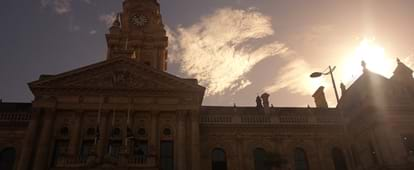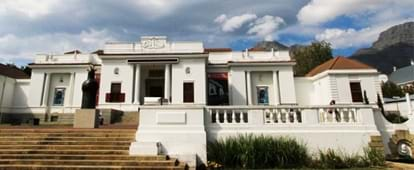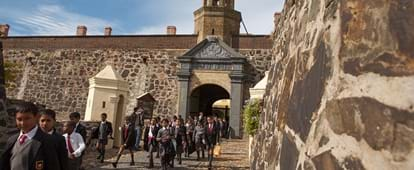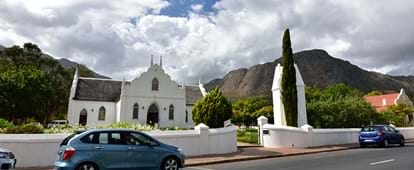By creating an account, I agree to the
Terms of service and Privacy policy
Choose your country and language:
Africa
Americas
Asia Pacific
Europe
TThe Western Cape was the first place that Europeans settled in the country, in 1652 when Jan van Riebeeck’s three vessels landed at the Cape. As employees of the Dutch East India Company, they had come to establish a halfway station for ships travelling to and from the East. Their influence is evident in the buildings, some of which are 350 years old, and culture of the Western Cape.
The oldest surviving structure in South Africa, the Castle of Good Hope, was built between 1666 and 1679 by the Dutch East India Company. The castle has five corners, shaped similarly to a star. Each corner has a name: Buren, Nassau, Katzenellenbogen, Leerdam and Oranje.

TThe Company’s Garden, Cape Town, in Upper Adderley Street is the oldest garden in South Africa. It was established in 1652 by Jan van Riebeeck as a vegetable garden to supply fresh produce to passing ships.
Groot Constantia is an imposing Cape Dutch homestead that belonged to Cape Governor Simon van der Stel from 1699 to 1712. It is famous for its fine wines. Its cellar boasts sculptures by Anton Anreith.

TThe Dutch were not the only ones who had an influence on the Western Cape. Politics also played a role. Famous because it was home to the prison where the late former President Nelson Mandela was incarcerated, Robben Island is a must for any visitor to Cape Town. The tour includes viewing his cell as well as the cells of many other famous freedom fighters.
The Cape is a mixture of cultures and religions. The Bo-Kaap, with its candy-coloured houses along the alleyways of this thriving Muslim community, is a photographer’s delight. Visit the Bo-Kaap Museum to gain a better understanding of the complex social history of this neighbourhood. Sheikh Yusuf Kramat is one of the most important spiritual shrines in the country. Sheikh Yusuf is said to be the father of Islam in South Africa and lived in the Cape in the late 1600s. Further out of Cape Town, Dorp Street in Stellenbosch, the oldest town in the country, is a national heritage, with its Cape Dutch-style buildings.

AAlso outside of Cape Town lies Franschhoek, which means the French Corner. The town was settled by Huguenots (French Protestants) in the 1700s who made an important contribution to the Cape’s wine industry. Today a museum and historical wine cellars still bear French names. The town boasts some of the best restaurants and chefs in South Africa. Another town not to be missed is Tulbagh. Its entire Church Street is a heritage site and features lovingly restored and maintained Cape Dutch buildings straight out of the 18th century.
The Bartolomeu Dias Museum Complex in Mossel Bay was established in 1988, as a tribute to the discoverer Bartolomeu Dias. Among others, it boasts an impressive replica of his Caravel.

Related articles

